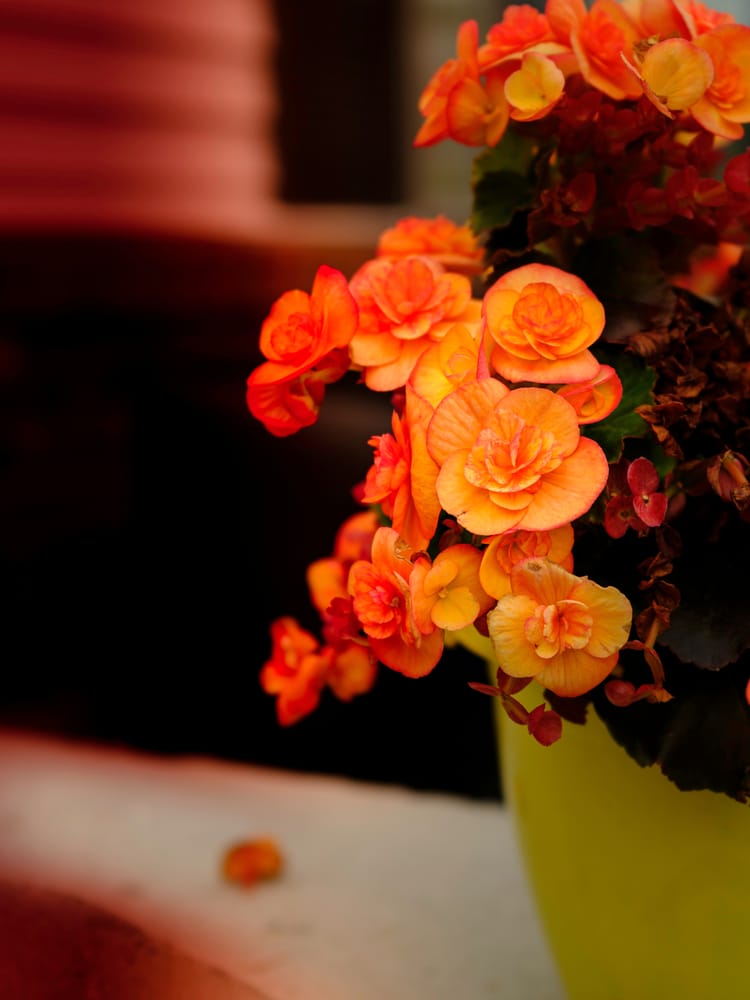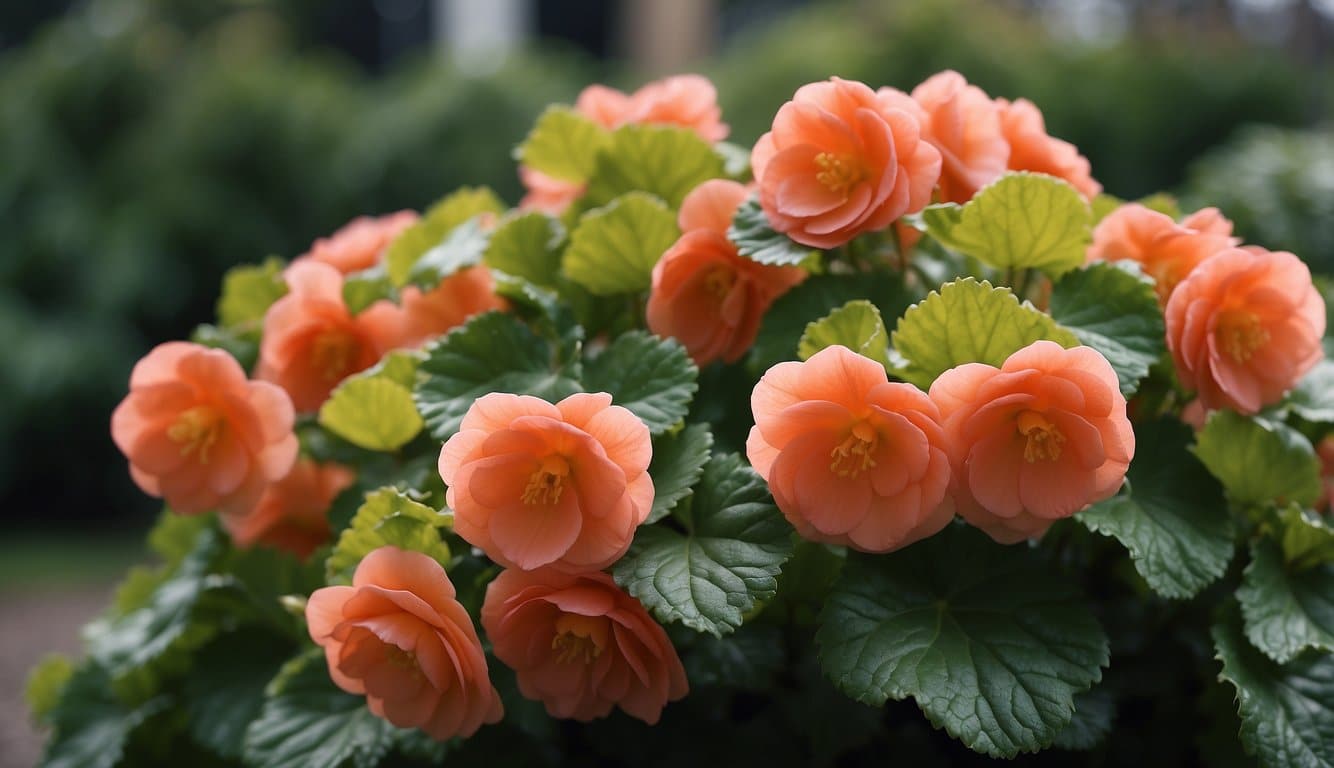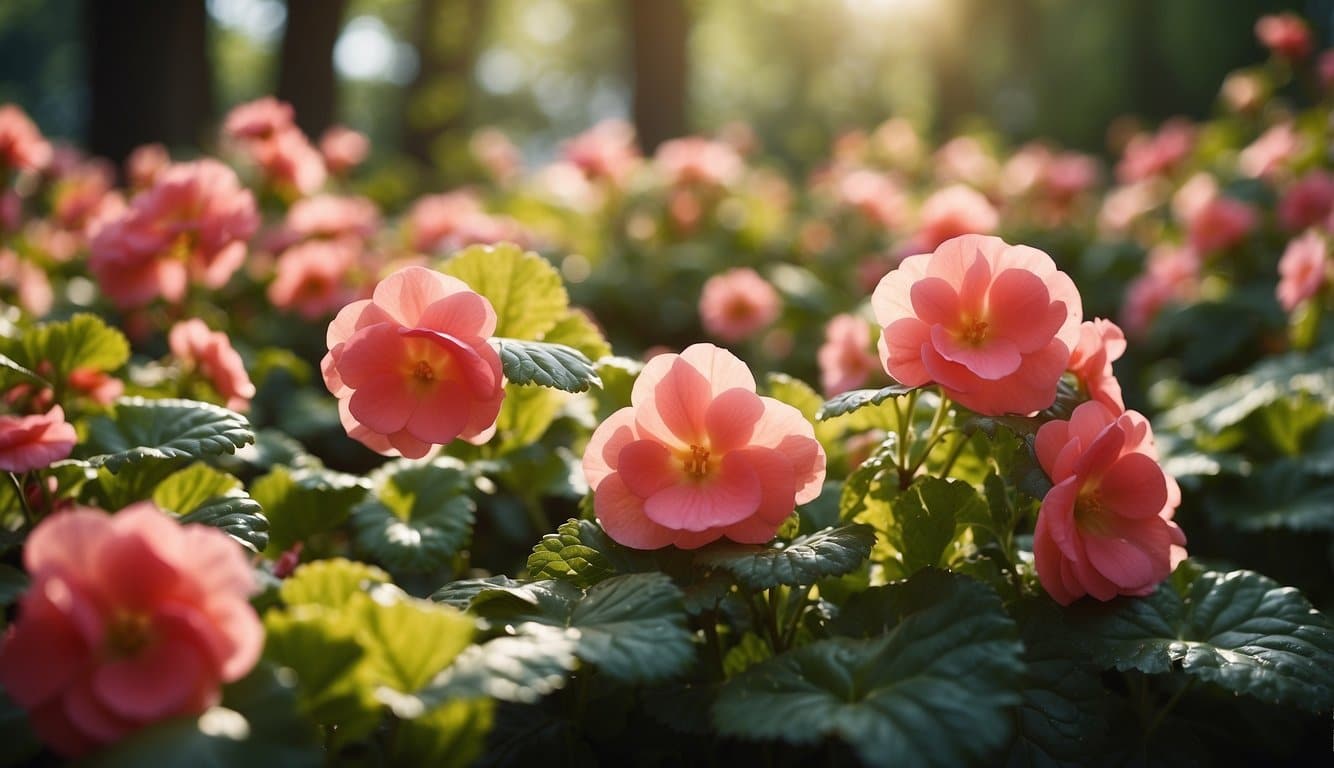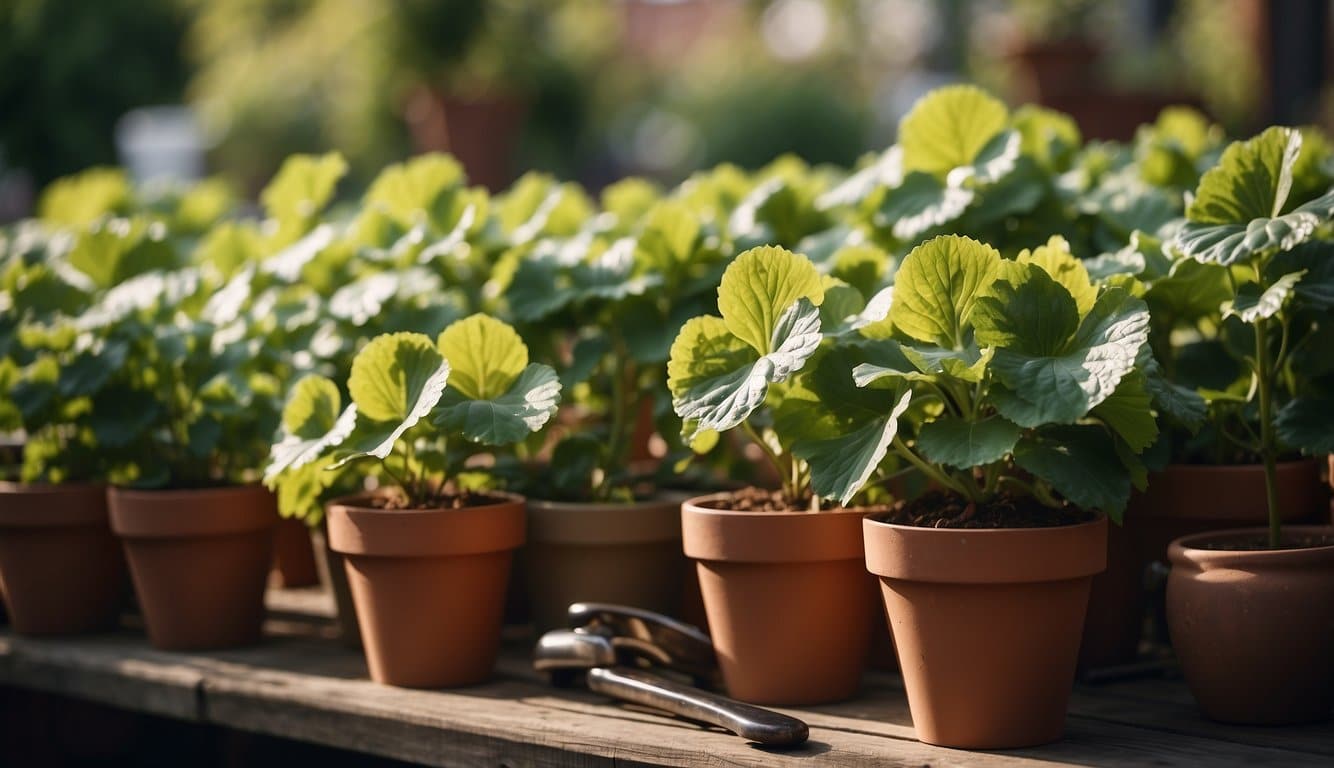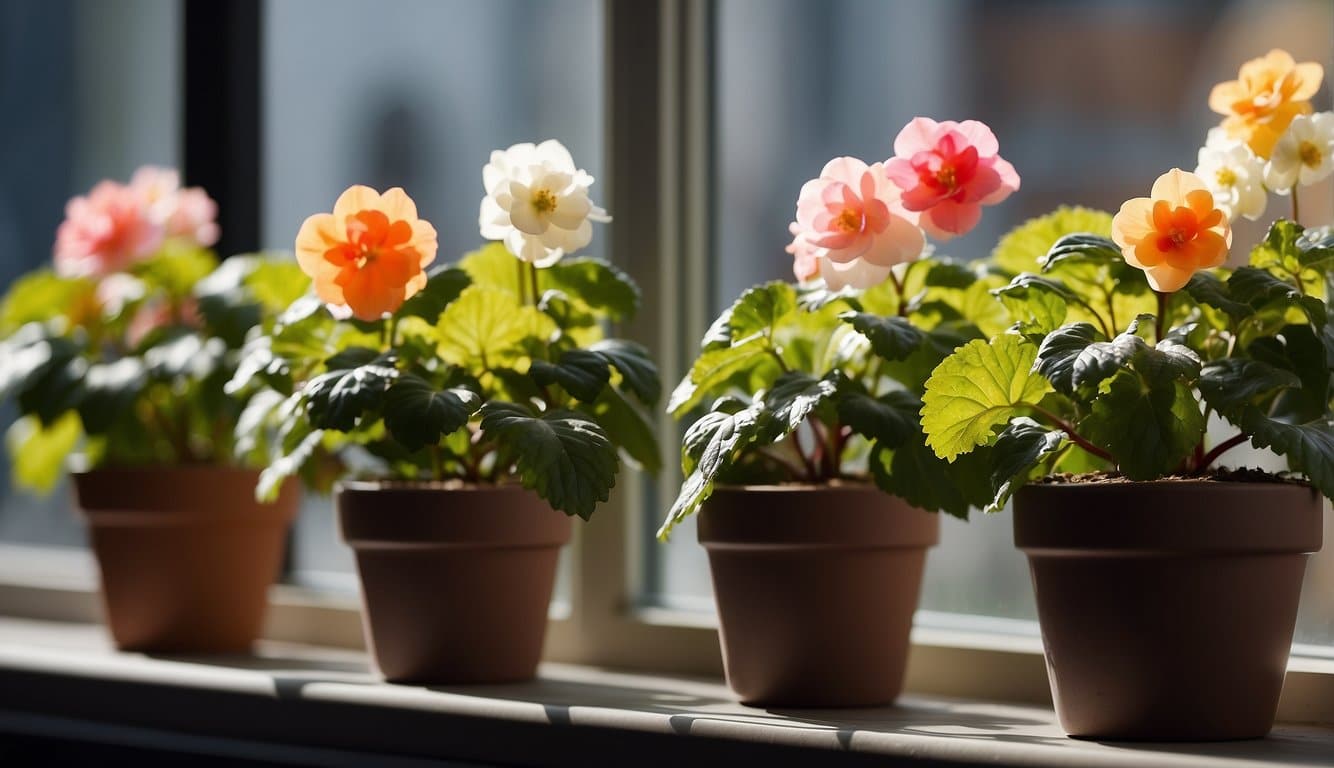Amstel Begonias, scientifically known as Begonia x hiemalis, are a delightful group of hybrid plants that merge the best characteristics of tuberous and wax begonias.
Their vibrant blooms and mounding form make them popular among garden enthusiasts. These perennials are prized for their ability to flower continuously throughout the growing season, bringing a long-lasting splash of color to both outdoor and indoor spaces.
Caring for an Amstel Begonia involves specific requirements to ensure its health and prolific blooming.
Ideal conditions include well-draining soil, regular watering that avoids water-logging, and exposure to bright, indirect sunlight.
The series boasts a variety of colors and sizes, which allows for versatility in usage, from enhancing garden beds to gracing indoor pots.
With their double or semi-double flowers that often have a ruffled appearance, Amstel Begonias can be an impressive addition to any plant collection.
Key Takeaways
- Amstel Begonias are hybrids that combine traits from tuberous and wax begonias, offering continuous blooming.
- Proper care includes well-draining soil, consistent moisture, and bright, indirect light.
- They come in many colors and sizes, suitable for both garden beds and indoor pots.
Amstel Begonia Overview
The Amstel Begonia, a delightful addition to any indoor or outdoor garden, boasts a vibrant display of flowers with a ruffled appearance and a robust, mounding growth habit.
Classification
The Amstel Begonia is part of the Begoniaceae family, specifically classified as a Rieger begonia. It is a hybrid, created by the successful crossbreeding of the tuberous begonia with the wax begonia.
Origin and History
This plant originated from a deliberate breeding effort to combine the best traits of its parent species. While its precise history is a blend of horticulture and botany, it is known for its ability to add color and life to garden spaces and homes.
Distinct Features
Amstel Begonias are recognized for their:
- Height: Typically reaching about 12 inches tall.
- Flowers: They exhibit double or semi-double blooms with multiple petal layers.
- Form: These plants maintain a mounding growth form, contributing to their lush appearance in garden settings.
Cultivation and Care
The Amstel Begonia, with its lush blooms and ruffled petals, requires specific growing conditions and maintenance practices for optimal health and display.
A systematic approach to propagation ensures gardeners can enjoy these vibrant plants year after year.
Growing Conditions
Soil: The Amstel Begonia prospers in rich, well-draining soil with a pH between 6.0 and 7.5.
Light: Partial shade is ideal for these begonias, although they can tolerate full sun provided that the soil remains consistently moist.
Watering: Regular watering is crucial, yet care should be taken to avoid waterlogging.
Temperature: Amstel Begonias thrive in moderate temperatures without exposure to frost.
Maintenance and Pruning
Fertilization: Monthly feeding with a water-soluble 15-30-15 fertilizer encourages flowering.
Mix 1/2 teaspoon with one gallon of water, applying it to the base while avoiding the foliage.
Pruning: Regular deadheading of faded flowers and pruning of yellowing leaves helps maintain the plant’s appearance and promotes further blooming.
Propagation Methods
Stem Cuttings:
- Cut a healthy, non-flowering stem just below a leaf node.
- Place the cutting in a moist growing medium to encourage root growth.
Leaf cuttings, Rhizomes, and Tubers:
- Leaf cuttings can root in water or moist potting soil.
- Plant rhizomes and tubers directly into moist potting soil for sprouting.
Common Varieties and Uses
Amstel Begonia is a versatile plant, showcasing variety differences that accommodate both ornamental and commercial needs.
They enhance landscapes with their full form and bright blooms, and their adaptability makes them an asset in the horticultural market.
Variety Differences
- Begonia x hiemalis (‘Amstel Clara’): A hybrid with glossy green foliage and rosette blossoms.
- Begonia semperflorens (‘Wax Begonia’): Known for dark green waxy leaves and flowers in shades of white, pink, or red.
The distinction in these varieties lies in traits such as leaf texture, flower color, and growth habit, promoting diversity within the species.
Landscape and Decorative Use
| Environment | Decorative Impact | Ideal Begonia Variety |
|---|---|---|
| Shaded Areas | Enhances undergrowth with colorful blooms | ‘Amstel Clara’ |
| Hanging Baskets | Ideal for aerial displays | Wax Begonia |
| Bedding | Creates lush ground cover | Wax Begonia |
These begonias are sought for their ability to flourish in partial shade and their consistent flowering, thereby contributing to diverse garden aesthetics.
Commercial Significance
Amstel Begonias are propagated for commercial sale primarily through stem cuttings.
They are marketed for their ease of growth and maintenance, as well as their decorative appeal.
This has established them as favorable plants in both retail and wholesale markets. Their long blooming season makes them attractive to consumers seeking continuous garden vibrancy.
Frequently Asked Questions
In this section, readers will find common inquiries about Amstel begonias with concise, expert responses that aim to assist in the care and understanding of this vibrant plant.
How should one care for Amstel begonias to ensure optimal health and growth?
Amstel begonias thrive in well-draining soil and require consistent moisture without waterlogging.
They benefit from bright, indirect light and occasional pruning to remove dead leaves and promote bushier growth.
What are the mature size dimensions of an Amstel begonia plant?
The Amstel Series begonias typically reach a height of about 12 inches with a mounding growth habit, making them suitable for indoor spaces and outdoor containers alike.
Where can one find Amstel begonias available for purchase?
Amstel begonias can be found at garden centers, nurseries, or online plant retailers.
Checking local nurseries for availability, particularly during the growing season, may yield the best results.
What are the propagation techniques for Amstel begonias?
Propagation of Amstel begonias is commonly achieved through leaf cuttings or by dividing the plant during repotting, which can help gardeners to multiply their collection.
Can Amstel begonias be classified as annual or perennial plants?
Amstel begonias are typically grown as annuals in most climates; however, in their ideal environment or when protected from frost, they can behave as perennials.
What light conditions are most favorable for the growth of begonias?
Amstel begonias prosper best in conditions where they receive bright, indirect sunlight.
Direct sunlight can damage the leaves, whereas too little light can hinder flowering.
